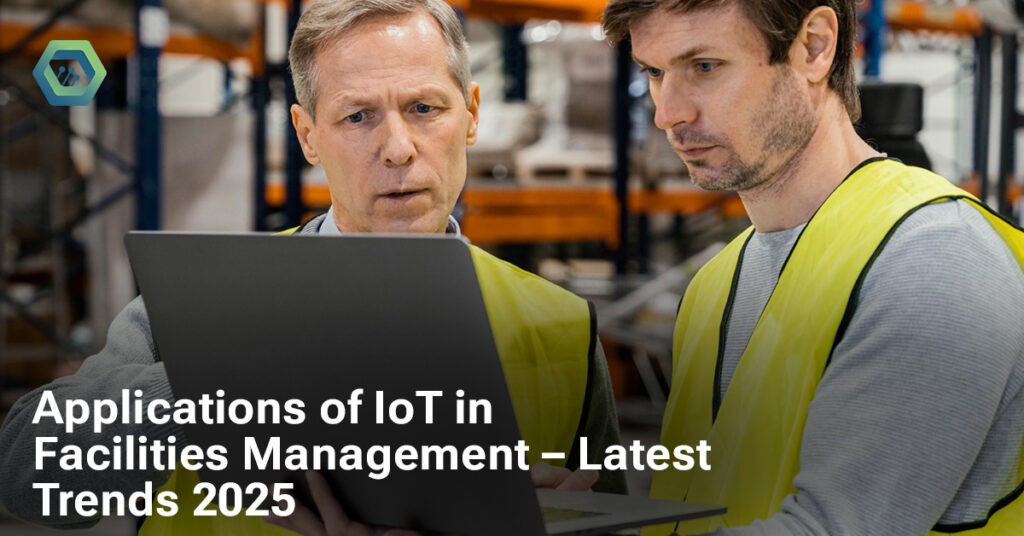In 2025, technology continues to reshape how buildings are managed and maintained. One of the most powerful transformations is the use of IoT in Facilities Management. From smart lighting to predictive maintenance, IoT is helping facility managers make informed decisions, reduce costs, and improve safety. The ability to connect, monitor, and control building systems in real time is no longer a luxury—it’s becoming a necessity.
This blog explores the latest trends and applications of IoT in Facilities Management. Whether you manage a commercial building, hospital, school, or factory, understanding how IoT works in facility operations is crucial to staying ahead in this rapidly evolving space.
What is IoT in Facilities Management?
IoT in Facilities Management refers to the integration of Internet of Things (IoT) technologies into building and infrastructure operations. IoT-enabled devices like sensors, cameras, thermostats, and meters collect data and transmit it to cloud platforms for analysis. This enables real-time tracking, automation, and remote control of various building systems.
Key functions of IoT in Facilities Management include:
Monitoring HVAC systems for energy efficiency.
Tracking occupancy and usage patterns.
Detecting leaks or equipment malfunctions.
Enhancing security with smart surveillance.
The result is a smarter, more responsive building that can anticipate needs and optimize performance automatically.
Key Applications of IoT in Facilities Management (2025)
In 2025, the scope of IoT in Facilities Management is wider than ever. Here are some of the most impactful applications:
1. Predictive Maintenance
Using sensors on critical equipment like HVAC units and elevators, facilities can detect problems before they cause breakdowns. IoT in Facilities Management ensures better uptime and lower maintenance costs.
2. Energy Management
Energy consumption is a major concern for facility managers. Smart meters and environmental sensors track energy usage in real time, helping managers adjust lighting, heating, and cooling systems. IoT in Facilities Management improves sustainability and reduces utility bills.
3. Occupancy Monitoring
IoT-based occupancy sensors monitor foot traffic and usage patterns. This helps in space optimization, especially in offices or shared spaces. IoT in Facilities Management also supports social distancing protocols and efficient cleaning schedules.
4. Indoor Air Quality Monitoring
As health and safety become more important, IoT in Facilities Management includes CO2 sensors and air quality monitors to ensure healthy indoor environments.
5. Asset Tracking
Tracking high-value assets like medical equipment or factory tools ensures accountability and minimizes loss. IoT in Facilities Management makes this process accurate and automated.
Latest Trends in IoT for Facilities Management
The industry is evolving fast, and new trends are shaping the future of IoT in Facilities Management:
1. AI Integration
AI and machine learning are now working with IoT to predict maintenance needs, automate HVAC controls, and offer advanced analytics. This makes IoT in Facilities Management even more powerful and proactive.
2. Edge Computing
Rather than sending all data to the cloud, edge computing processes data locally. This leads to faster decision-making and reduces bandwidth costs—an emerging trend in IoT in Facilities Management.
3. 5G Connectivity
With faster and more reliable connections, 5G boosts the performance of connected devices. It enhances the responsiveness of IoT in Facilities Management applications like real-time video surveillance and emergency alerts.
4. Integration with Building Information Modeling (BIM)
BIM and IoT are coming together to give a digital twin of the facility. This combination offers deep insight into the building’s infrastructure and systems, pushing IoT in Facilities Management to new heights.
5. Cybersecurity Focus
As IoT devices increase, so do security risks. In 2025, a key trend is securing IoT in Facilities Management with encryption, device authentication, and regular vulnerability checks.
Benefits of IoT in Facilities Management
The benefits of adopting IoT in Facilities Management are both operational and financial:
Improved Efficiency: Automated systems reduce manual oversight and errors.
Cost Savings: Lower energy usage and predictive maintenance save money.
Enhanced Safety: Real-time alerts and monitoring keep buildings safer.
Sustainability: Better resource usage leads to greener operations.
Data-Driven Decisions: Managers can act based on insights, not guesswork.
These advantages make IoT in Facilities Management a valuable investment for organizations of all sizes.
Challenges and Considerations
Despite its benefits, IoT in Facilities Management comes with challenges:
Integration Complexity: Legacy systems may not support modern IoT devices.
Data Overload: Managing and interpreting large amounts of data can be difficult.
Cybersecurity Risks: Connected devices can be targets for hackers.
Initial Costs: Upfront investment in devices and infrastructure may be high.
Training Needs: Staff must be trained to use the new systems effectively.
Facility managers should work with reliable technology partners and invest in secure, scalable solutions for IoT in Facilities Management success.
Future Outlook
The future of IoT in Facilities Management looks promising. As technologies evolve, we can expect even greater automation, deeper insights, and better building performance. Facilities will become smarter, greener, and more user-centric.
In the coming years, advances like AI-powered robots, self-healing systems, and autonomous building operations will redefine the role of facility managers. IoT in Facilities Management is not just a trend—it’s the future of how we interact with physical spaces.
Conclusion
The applications of IoT in Facilities Management are rapidly evolving, with 2025 bringing smarter, more connected buildings that operate efficiently and proactively. From real-time monitoring and predictive maintenance to energy optimization and enhanced safety, IoT is reshaping how facilities are managed across industries.
As the demand for intelligent infrastructure grows, partnering with the right platform becomes essential. That’s where OmniWOT makes a difference.
At OmniWOT, we offer a powerful and scalable IoT platform tailored for facility management needs. Our open-source, cloud-based solution supports seamless device connectivity, real-time data processing, and customizable dashboards—empowering facility managers to make informed decisions with ease.
If you’re ready to unlock the full potential of IoT in Facilities Management, OmniWOT is here to help you lead the change.


